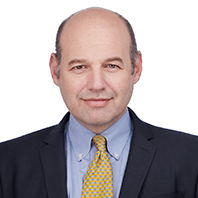News from DCAT Week 2022: AGC Biologics CEO Outlines $1.6-Bn Expansion Plan
Patricio Massera, CEO, AGC Biologics, a biologics CDMO, outlined a $1.6-billion expansion plan over the next four years in its global biomanufacturing network at the DCAT Member Company Announcement Forum held on March 21, 2022 at DCAT Week 2022.

CEO
AGC Biologics
The expansions and investments help the company to meet growing demand at its protein expression sites in Boulder, Colorado; Chiba, Japan; Copenhagen, Denmark; Heidelberg, Germany; and Seattle, Washington, as well as at its advanced therapies sites in Longmont, Colorado, and Milan, Italy.
In the advanced therapies space specifically, AGC Biologics has been making extensive investments since 2019. The company plans to use its latest investment to finalize the integration of the Longmont facility into its network; the company had acquired the facility last year (2021). As the new North American hub for the company’s cell-therapy and viral vector gene-therapy offering, the 622,000-square foot site can support the entire development and manufacturing process.
Its viral vector gene-therapy services include nine iCELLis bioreactors that range from 200 L to 2,000 L with both suspension and adherent capabilities. The Longmont cell-therapy labs will have 10 to 15 development and manufacturing suites by 2024. AGC Biologics is currently in discussions with several companies to develop and manufacture advanced therapy treatments and anticipates ramping up services later this year (2022) as the site becomes fully operational.
The company also announced it will open a new site in Yokohama, Japan. The Yokohama site will offer process development, analytical, and manufacturing services for mammalian protein expressions, advanced cell therapies, and messenger RNA (mRNA). The company estimates this new site will be on line in 2025.
Overall, the new investments provide the company with additional capacity for protein-based mammalian and microbial biologics, cell therapies, viral vector gene therapies, and plasmid DNA (pDNA), along with a new and growing mRNA practice.

